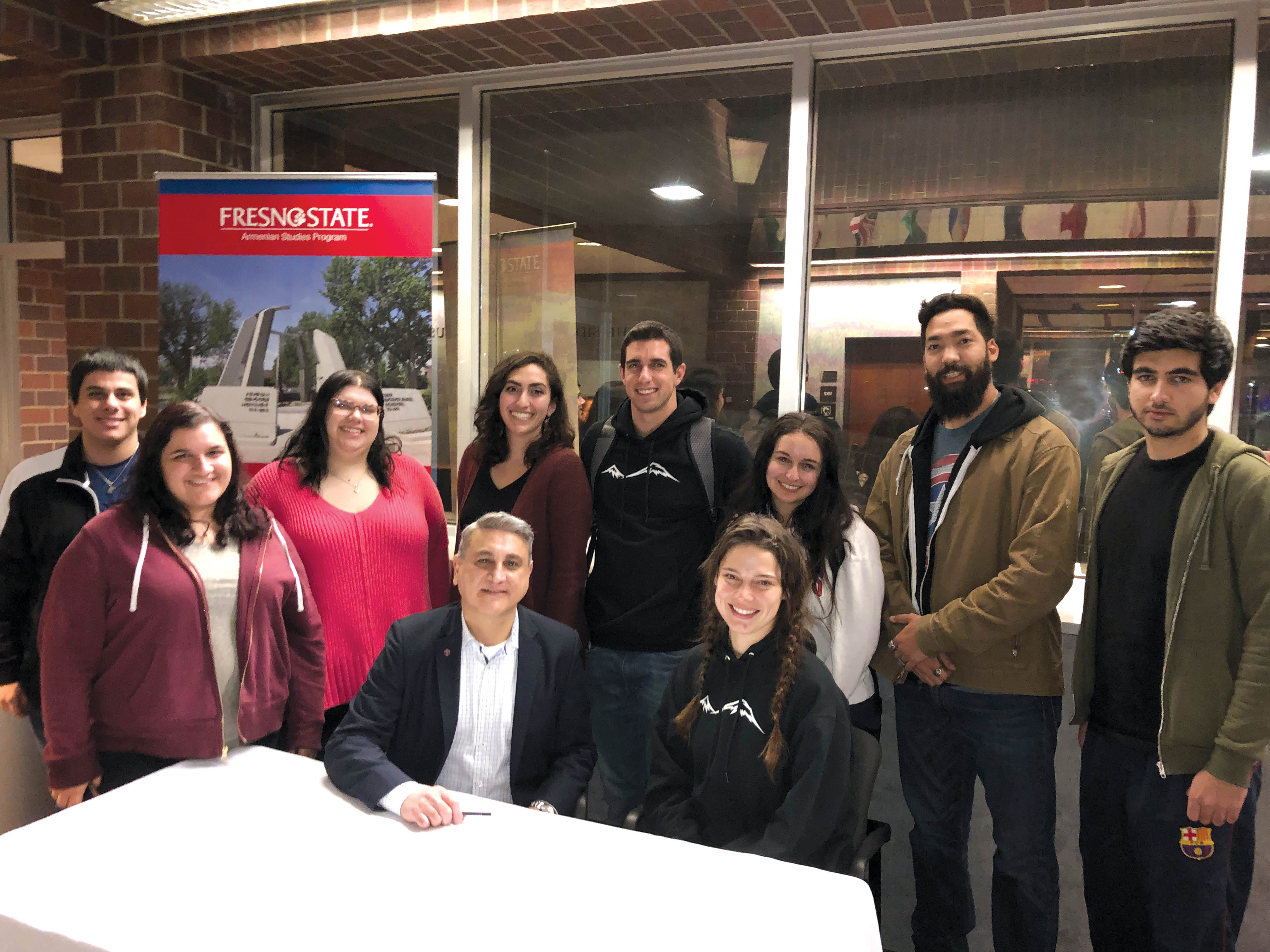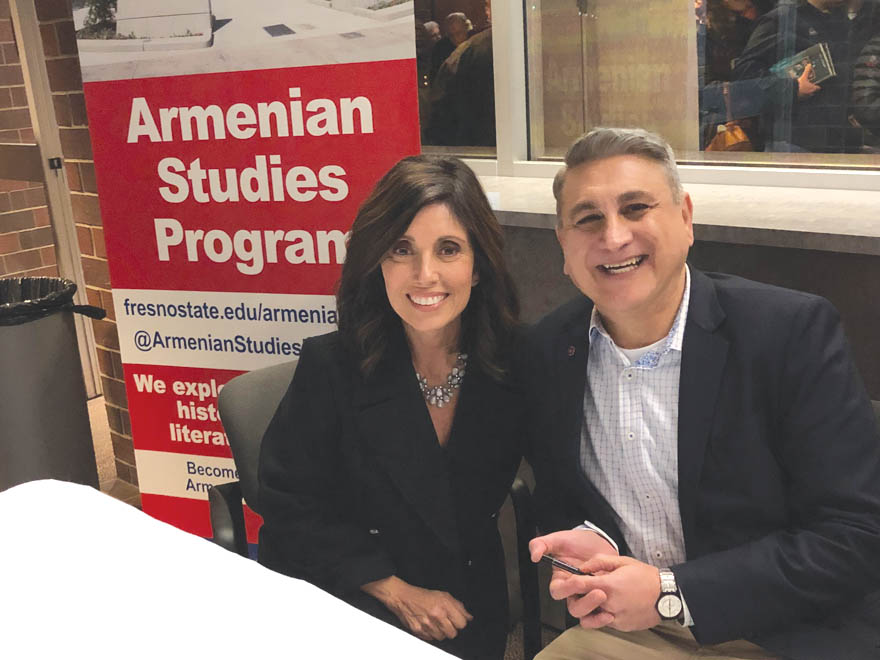Arshak Abelyan
Staff Writer

From the violent streets of Beirut to the places he called his home, Armenia and Fresno, Paul Chaderjian’s new novel Letters to Barbra reveals the beauty and tragedy in life. Chaderjian’s grandparents were Armenian Genocide survivors who settled in Beirut and thus, he experienced the Civil War in Lebanon.
Chaderjian discussed his new novel at a book launch organized by the Armenian Studies Program at Fresno State on Tuesday, February 12. The format for the evening was interesting and engaging as KSEE24 anchor Stefani Booroojian joined Chaderjian in the presentation. Booroojian conducted the evening as an interview with Chaderjian. Interspersed with the discussion were clips of some of the major stories that Chaderjian had covered in places such a Syria. The coverage of those events had a deep impact on Chaderjian’s life.
Chaderjian’s main character in Letters to Barbra is a young man named Adam. The story of Adam and Paul is intertwined in that they both experienced violence and sought to write as the main outlet to express their feelings. Chaderjian was inspired by the 1972 movie, “What’s Up Doc?” starring Barbra Streisand and utilizes her as the idol to whom Adam writes his letters to. Adam sends letters to Barbra asking her to help stop the Lebanese Civil War, which has been devastating and tragic for his family and friends. Paul Chaderjian and his family were similarly fortunate to escape the Civil War in Lebanon, but hoped that they would one day return. The novel also includes many references to Fresno, where the author’s career began.
Chaderjian is a writer and broadcast journalist, but has worked for Al Jazeera, CNN, ABC news, and television stations in Fresno, New York, Yerevan, Los Angeles, and Honolulu. He is a graduate of USC and has a graduate degree in Mass Communication and Journalism from Fresno State.
Chaderjian has reported on many heartbreaking and emotional stories that stayed on his mind from the time that his ten-hour shifts began to the time he arrived home.
During the presentation Fresno State students Kara Statler and Claire Kasaian read excerpts from Letters to Barbra, illustrating the deep emotional impact of the novel.
The novel is based on a series of letters that Chaderjian began writing in 2003. He did not realize that in 16 years he would publish a book based on the series. Chaderjian summed up his thoughts on why he became an author by saying “writing is not just a way to express yourself, but also to heal yourself.” He wrote Letters to Barbra not only for entertainment purposes, but to allow people “to think about what they value in life, how they act every hour or everyday towards the ones they love and the ones on the streets.”

The novel portrays the life which people of the Armenian diaspora live from the perspective of both Adam and Paul. It seemed that being in Armenia meant homesickness for both Adam and Paul in that Fresno was their home. Adam expresses the feelings of being marginalized in the new environment in America. This was one of the aspects in which allowed the book to seem it was also telling the story of Chaderjian.
Chaderjian was asked if he had any more works in progress and answered, “Time in Doha.” He has been an engaged writer and journalist not only in his career in media, but also has been a prominent Armenian role model in the Armenian Diaspora.
In the epilogue to the novel, Chaderjian expresses his thoughts on what life is all about. “Nations will prosper, cultures will die, people will vanish and languages will be lost. All that will remain are the eternal and universal dynamic of humans trying to be human, people caring for one another, strangers showing their empathy and the masses trying to make sense and live every second of each moment the best they know how.”
 Hye Sharzhoom Armenian Action
Hye Sharzhoom Armenian Action